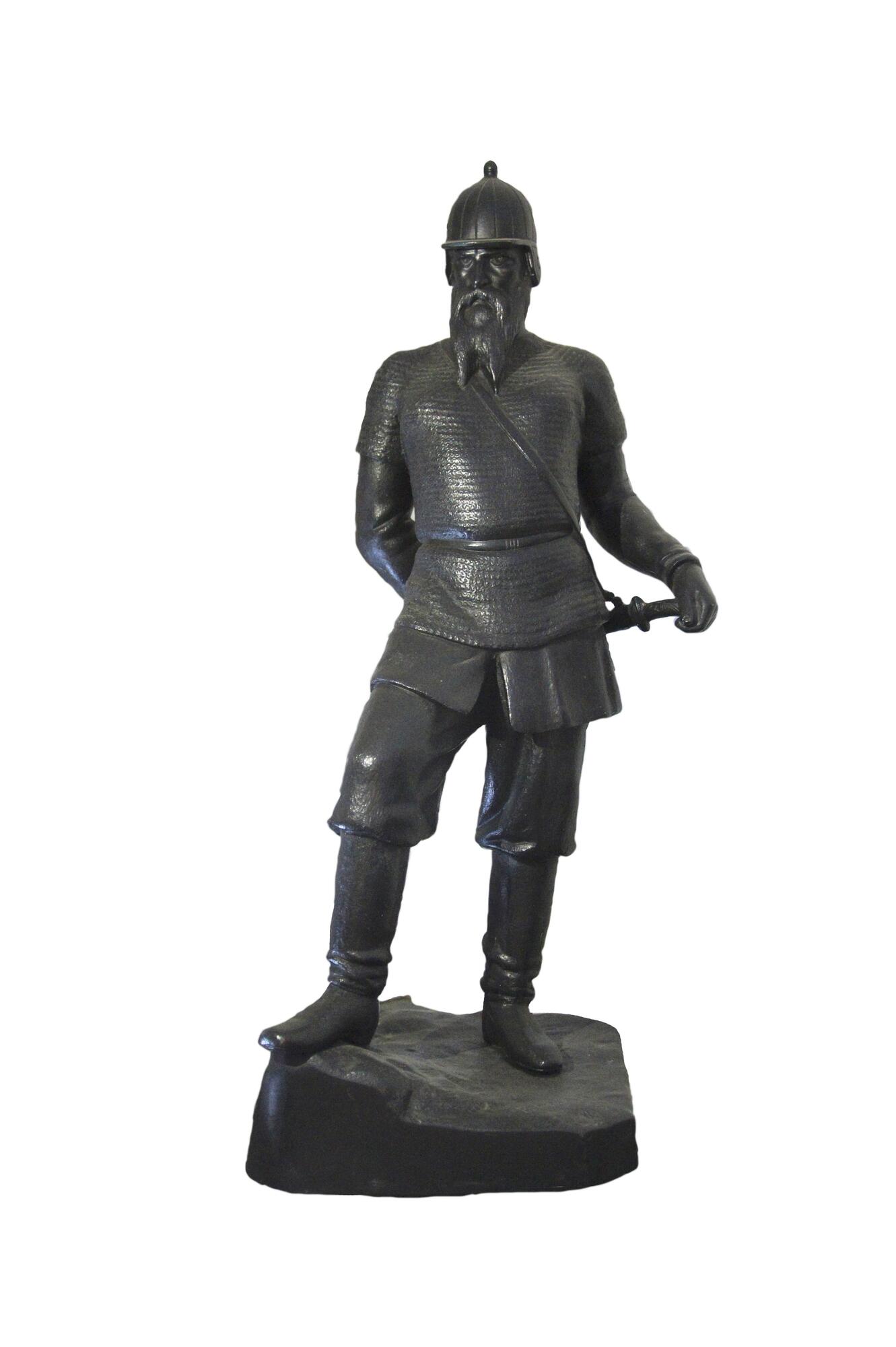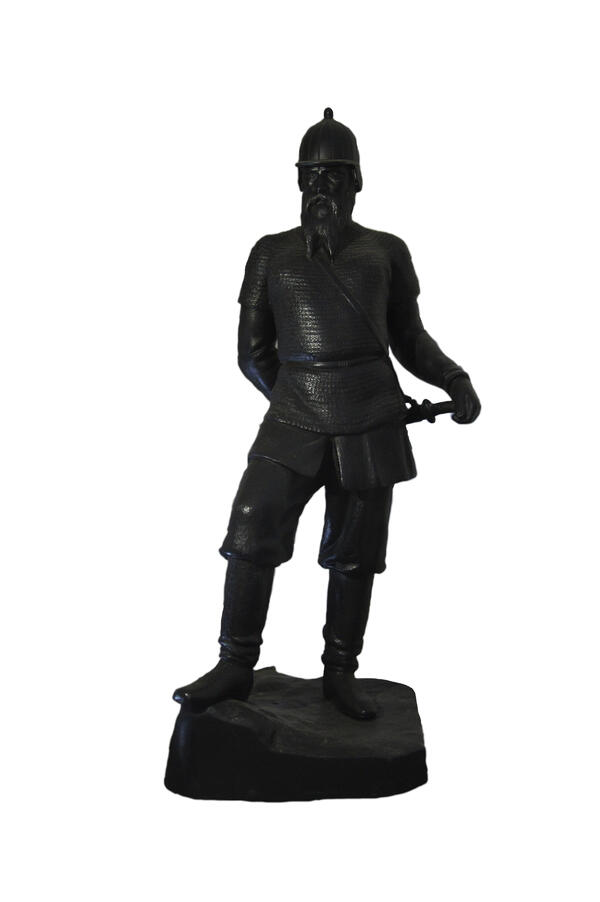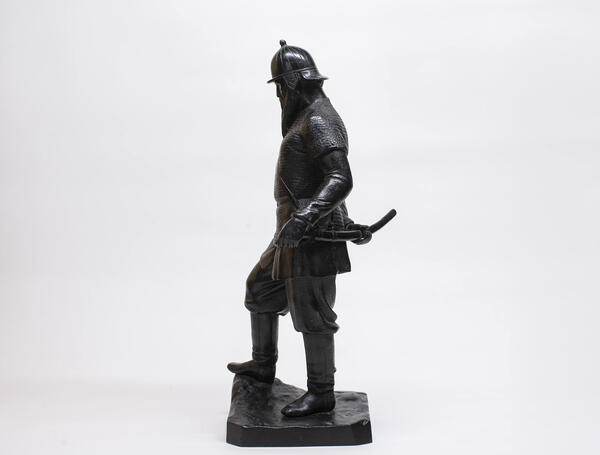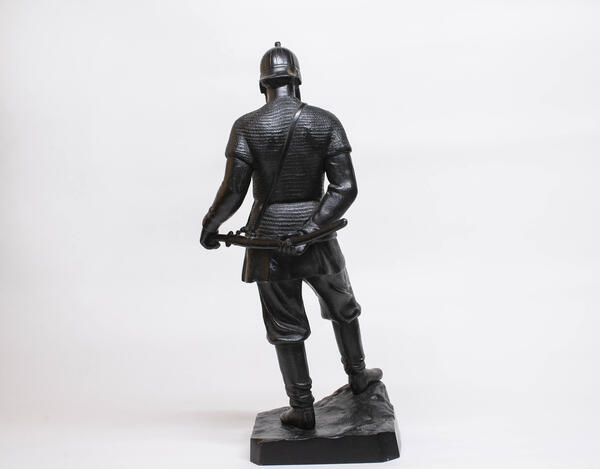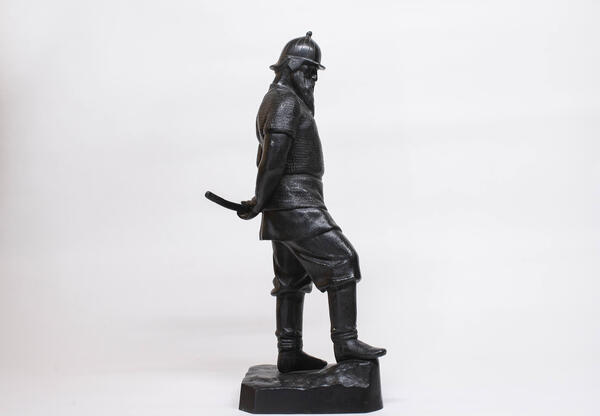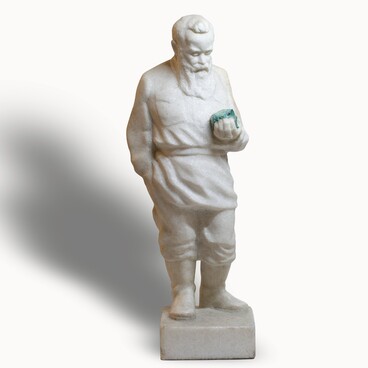The statuette “Yermak” was presented to Pavel Petrovich Bazhov for his 70th anniversary among other sculptures produced by the Kasli Iron Foundry in 1949. He received it from a team of activists from the Sverdlovsk Pedagogical Institute.
Bazhov was always fond of history, especially that of his native land — the Urals. However, his interest was not limited to archival data and documents, serious scientific research, or even classical literature. The writer carefully studied folk, legendary, fantastic and “fairy-tale” versions of certain events, interpretations of phenomena, and descriptions of personalities. Bazhov was interested in Yermak for many years, and the tales about this character were among the first conceived by the author.
In letters to his friend and colleague Yevgeny Andreyevich Permyak, Bazhov complained, “After all, not everyone knows that our historians harbor a deep resentment against Yermak and have not conducted a single solid study.” The writer himself tried to carefully examine all the data concerning the famous Cossack. However, he distinguished between historical and literary approaches to the image of the hero.
In the tale “Yermak’s Swans” Bazhov, having sifted through many conflicting sources, outlined his own version of Yermak’s biography and campaigns, which was based on folk consciousness and the Ural chronicles and legends.
After the publication of the tale, the writer received a letter from the editorial office of the “Great Soviet Encyclopedia” with a proposal to present his own version of Yermak’s origin for an encyclopedic article. Bazhov’s youngest daughter Ariadna recalled:
Bazhov was always fond of history, especially that of his native land — the Urals. However, his interest was not limited to archival data and documents, serious scientific research, or even classical literature. The writer carefully studied folk, legendary, fantastic and “fairy-tale” versions of certain events, interpretations of phenomena, and descriptions of personalities. Bazhov was interested in Yermak for many years, and the tales about this character were among the first conceived by the author.
In letters to his friend and colleague Yevgeny Andreyevich Permyak, Bazhov complained, “After all, not everyone knows that our historians harbor a deep resentment against Yermak and have not conducted a single solid study.” The writer himself tried to carefully examine all the data concerning the famous Cossack. However, he distinguished between historical and literary approaches to the image of the hero.
In the tale “Yermak’s Swans” Bazhov, having sifted through many conflicting sources, outlined his own version of Yermak’s biography and campaigns, which was based on folk consciousness and the Ural chronicles and legends.
After the publication of the tale, the writer received a letter from the editorial office of the “Great Soviet Encyclopedia” with a proposal to present his own version of Yermak’s origin for an encyclopedic article. Bazhov’s youngest daughter Ariadna recalled:
